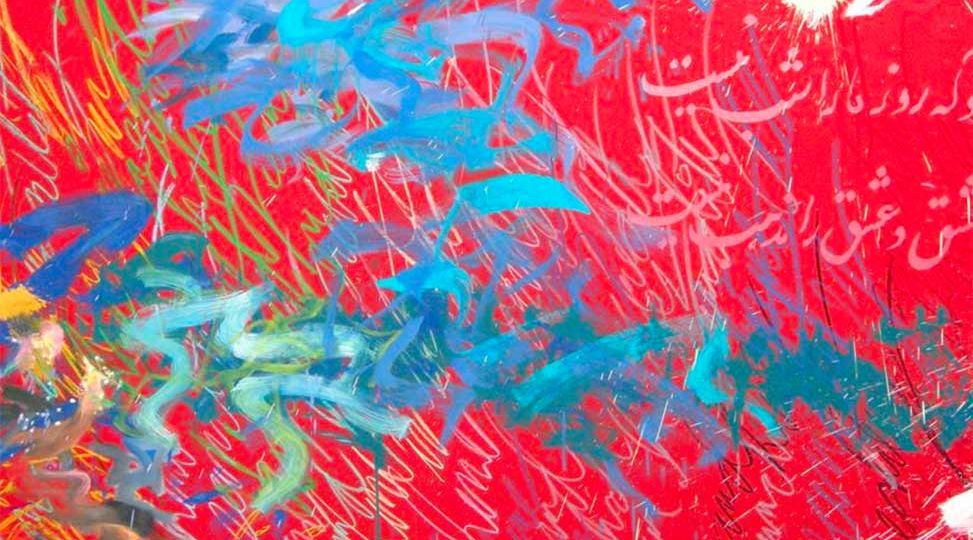
Pregnant Language
Poetry as a Re-birthing of the Feeling Function
Deborah Quibell, February 5, 2014
Your grief for what you’ve lost lifts a mirror
up to where you’re bravely working.
Expecting the worst, you look, and instead,
here’s the joyful face you’ve been wanting to see.
—Rumi (13th century)
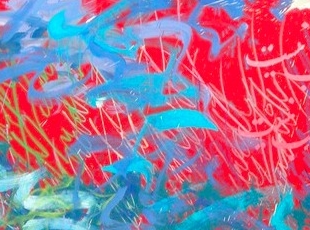
In his powerful series of lectures on the feeling function, Hillman (1971) claimed that this function “has lain like a buried continent in the collective psyche” (p. 113). Both Hillman and Jung himself seem to suggest that poetry may be a means to excavate the remains of a function long ago lost from society, to re-birth it—a way of tending to what has been unattended to, to bring the feeling function back out into the world in a meaningful way.
It is essential to understand that each of the four functions (sensing, intuiting, thinking, and feeling) is a function of consciousness, and an “individual adapts and orients himself chiefly by means of his most differentiated function” (Jung, 1971, para. 556). However, all of us contain aspects of all four functions, and much of our path of individuation is seeking balance and wholeness within the psyche, which includes an integration of the various psychological types. The functions “belong to the development of the conscious personality, forming part of the ego, its consistency, its habits, unity and memory, its characteristic way of performing” (Hillman, 1971, p. 113).
It is easy, as Hillman suggested, to confuse feeling contents (emotions, anger, love, etc.) with the feeling function. The feeling function is the part of us that relates, makes judgments, connects, denies, etc. It can feel, appreciate and relate to things that aren’t only feelings; it can relate to thoughts, intuitions, etc. The feelings, however, are the contents, themselves. “One can have feelings without being able to do much with them, without being able to function feelingly” (Hillman, 1971, p. 105). Feeling is a values-based approach. “It determines what something is worth. Feeling is aware of the impact of its choices” (Haas & Hunziker, 2006, p. 21).

Jung wrote about the poet’s ability, through the creative impulse and a symbolic sensibility, to access deeper layers of existence. There is something that “seizes” us in creativity, that builds a bridge to connect us to a deep pool that all of mankind shares. Creativity for Jung often meant diving into the collective psyche and having a primordial experience. To understand a creative work, he suggested, we must relate to it and allow it to shape us as it shaped the artist:
Then we also understand the nature of his primordial experience. He has plunged into the healing and redeeming depths of the collective psyche, where man is not lost in the isolation of consciousness and its errors and sufferings, but where all men are caught in a common rhythm which allows the individual to communicate his feelings and strivings to mankind as a whole. (Jung, 1966, para. 161)
We communicate to mankind as a whole through the archetypes—universal motifs or patterns that connect all of us in this human and mortal existence. “Archetypes operate as deep psychological structures which govern the organization of experience… invariant principles in the psyche which are common to all of humanity” (Corbett, 1996, p. 57). However, Jung drew an important distinction, between the archetype itself, which is unknowable, and the archetypal or intrapsychic image. The image holds attributes of the archetype, points us to the archetype itself, and yet never can be the actual archetype. The archetypes remain unknowable, in the realm of mystery. Therefore, any image of an archetype is “only an expedient expression of the inexpressible” (Corbett, 1996, p. 59). In working with archetypal images, poetry becomes the finger relating us to what is beyond the image. I believe this is why great works of poetry can touch and move us so deeply, transport us to distant ponds within ourselves, and move us into sacred places that we feel are secret and holy.
The collective culture has placed great emphasis on thought and the logic of the mind, leaving the logic of the heart to remain buried or inferior. We have lost touch with the part of us that feels into something. “Loss is the main characteristic of feeling just now; we are at a loss, not knowing how to feel, where to feel, why to feel, or even if we feel” (Hillman, 1971, p. 97). I would add that we are at a loss of feeling-toned language. And yet, as the Persian poet Rumi suggested in the opening quote, our grief for what is lost often holds a mirror up to where we are bravely working. Poetry, of course, uses words. One, rationally, would assume that any attempt to language feelings would dissipate the feelings themselves. However, if we see feeling as a function, using poetic language becomes a way of feeling into different things, of languaging the un-language-able, of relating to what for many in our modern culture has become un-relatable. Thus, we work bravely towards re-birthing the function of feeling in a rational culture where thinking has become superior, at the expense of its opposite.
In order to do this, however, Hillman suggested two important and necessary steps. The first is the admission and acceptance, without the intervention of the superior functions, of whatever feelings are actually present and happening. Rumi’s famous poem, “The Guest House,” advocates not only for admission and acceptance but for an enthusiastic welcoming, a gratitude for whatever feelings come to visit:

Every morning a new arrival.
A joy, a depression, a meanness,
some momentary awareness comes
as an unexpected visitor.
Welcome and entertain them all!
Even if they’re a crowd of sorrows,
who violently sweep your house
empty of its furniture,
still, treat each guest honorably.
He may be clearing you out
for some new delight.
The dark thought, the shame, the malice,
meet them at the door laughing,
and invite them in.
Be grateful for whoever comes,
because each has been sent
as a guide from beyond.
(Barks, 1995, p. 109)
The second step is the evolution of the function “away from its narrowly subjective base toward a freer adaptation” (Hillman, 1971, p. 128). Here, we allow feelings to connect us to the archetypal realms, the deeper tides of connectivity, to the divine. Poetry is an invitation into relating. The fourteenth-century Sufi mystic, Hafiz, wrote,
You have been invited to meet
The Friend.
No one can resist a Divine Invitation.
That narrows down all our choices
to just two:
We can come to God
dressed for dancing
or,
Be carried on a stretcher
to God’s Ward.
(Ladinsky & Mindlin, 1996, p. 3)
The feeling function relates us to the sacred. Hafiz spoke the wisdom of depth psychology: When we repress the sacred and do not relate to the gods, they build up great force and break through, regardless. What we ignore often erupts into consciousness unexpectedly and can leave us, indeed, “on a stretcher.” Poetry is a way of coming to the sacred dressed for dancing.
To look back at the first step, since it is the feeling function that feels feelings, it must be allowed to feel whatever is there, regardless of whether the content is positive or negative. There is a way that poetry takes us into the tides of reflection and feeling, calling us to move away from logical judgment, and to simply be in the place of being, to feel in the place of feeling. Rumi, again, knew of this and wrote,
Out beyond ideas of wrongdoing and rightdoing,
there is a field. I’ll meet you there.
When the soul lies down in that grass,
the world is too full to talk about.
Ideas, language, even the phrase “each other” doesn’t make any sense.
(Barks, 1995, p. 36)
Here, the great poet challenges the thinking function. This poem states that when we are in the realm of true feeling, the world is so full that ideas and language disappear. What typically makes rational sense to us, no longer does, as we are captivated by the experience of lying down in feeling. Mary Oliver (1992) echoed a similar sentiment in her poem, moving us away from rational judgment, and inviting us to simply allow ourselves to feel what it is we feel, again tying to Hillman’s first suggestion. In “Wild Geese,” she wrote,

You do not have to walk on your knees
for a hundred miles through the desert repenting.
You only have to let the soft animal of your body
love what it loves
(p. 110)
If we rush to interpret or analyze or disregard feeling as unreliable, we cut the circuit to the feeling function, itself. We must sit first and feel into what we actually feel, as it happens, even when it is not easy, even when we desire to bury our feelings beneath the snow or take a different road. We may not realize, until we are looking back, the peculiar beauty of the heart’s meanderings, and how much this can guide and heal us. I discovered this once during a trying time in my life, when I desired desperately to bury my shredded heart. However, something within me realized that my only move was to be with the heart’s bleeding, and to do that, I wrote this poem:
At times, this holy path of the heart
seems unusually cruel
sentencing me
to higher and higher
restricted mountain passes
covered in rocky glaciers
that pierce the softened
soles of my feet
I thought my skin
would have toughened by now
and yet I look back
at deep and bloody footprints
in the white blanket of snow
And yet there is something
strangely beautiful
in their color and pattern,
I weep
as I recognize
the Earth now holds
an external expression
of the sorrow
I have carried within me
This poem enabled me to relate to what was going on within me, to find expression for it instead of rationalizing and moving past it, and ultimately to realize the beauty of expressing my deepest fears, longings, and sorrows.
I believe, in reconnecting to the feeling function, we begin to reconnect to the poetic sensibility within us. We pause. We allow ourselves to drink it in, to reflect, to feel into our environment, ourselves, or the other. Hillman (1971) wrote, “when I begin to feel that I long, I can begin to discover for what I actually long, and then some movement toward reflection and, even perhaps, fulfillment can be initiated” (p. 159). The beauty or angelic aspect of the word, comes not in descriptive isolation of facts, but comes when it relates us to some phenomenon, when it carries soul between us. In this way, words become bridges to the archetypal, much like the feeling function. They begin to open up, to become portals into what connects us all and relates us, deeply, to one another. How often I have read a poem from another poet and felt as if it were my own words, written directly for me and my own experience of what is before me, and yet known it is not “mine” at all. It awakens something underneath my personal feelings, and places them before a backdrop that deepens their context and meaning. In an instant, I feel as if I am connected to that poem, and in connecting with that, I am connected to the universal motifs, or archetypes, that are always moving silently below, shaping our human existence.
This speaks directly to Hillman’s second step: moving away from pure subjectivity to a “freer adaptation.” The feeling function is “deprived by the secular world in which we are set apart from bearing the values of and connecting existence with archetypal reality” (Hillman, 1971, p. 179). In Jung’s 1966 essay, “On the Relation of Analytical Psychology to Poetry,” he spoke at length of the poet’s ability to access the unconscious, to tap into what is needed for the individual and the culture at large and bring it before us. This is, to a large extent, an attribute of the intuitive function—another function with which many poets are adept. However, I would argue, with support from Hillman’s essay, that poetry not only brings this intuitively before us, but relates us to it, and thus, to one another. By utilizing the feeling function, poetry builds a relationship with the inner psychic world through what Hillman called “feeling-fantasies” (p. 163). Poetry greatly values the “soul-stuff” and the “feeling-fantasies” that “image my nature, and when I give value to them, they give me value, security, and strength” (Hillman, 1971, p. 163).
For example, I wrote the poem below after a visionary dream that brought up immense feeling for me, so immense I felt fearful of its magnitude. In the dream, I was trapped in the wilderness, longing, panicked, and alone. And yet, a part of me knew I was not alone, that there was something whispering to me in the wind:

and yet so often I feel I don’t know the way
Where have You hidden the answers
to the questions that plague my Soul?
I feel lost within the wilderness of my own despair
Lead me to you
Let your whisper carry me
over the storms that rage inside
Let your softness soothe my spirit
when the thorns have pierced my skin
Let your gentleness untangle
the vines that clench my heart
Let your breath brush my cheek
when the mist has veiled my eyes
I am like a wanderer
not lost and not yet found
But guided
Falling to my knees
Finding the answers among the dirt
as well as the sun
My guide, you have watched closely
and placed pebbles for me
among the rivers that separate us
You have given me the fragrance of your love
to follow until we meet
And just when I think you have forgotten
you send the wind to whisper in my ear
I hear you
In writing this poetic piece, I found a new sense of clarity and strength. The poem brought me into relationship with the Other, and the dream’s residue of fear seemed to dissipate. Hillman (1971) added, “Often dreams show figures that evoke feeling…[They] ask not only for amplification through intuition, or interpretation by thinking, but especially for appreciation by feeling” (p. 164).
Like the feeling function itself, poetry captures moments, and it is by feeling into these moments that something else opens and experience is transformed into moments of encounter. Encounter comes from the Latin incontra which means “in front of.” Often, the word implies a “coming against” something, a meeting that holds impact. Thus, the feeling function, by creating an encounter, demands courage. “It requires courage and honesty to give place to all that a feeling would say once it is in …a courage of the soul to encounter itself” (Hillman, 1971, p. 160). Experiences turn into encounters when we meet them in an open and receptive way, with the courage of the heart to feel into all of what stands before us. Poetry gives us language to relate us to the moment and thus it goes beyond what we, personally, are experiencing. “Experience must be turned into something fantastic to hit the psyche; that is, it needs to take on a poetic, metaphoric, or mythic aspect that goes beyond what one personally felt” (Hillman, 1971, p. 114). One thing is for sure: A great poem hits the psyche; it turns experience into fantastic moments of encounter. It provides the textures, the nuances, and hues to feel into each discrete moment. In the following quote from Hillman, I believe we could replace the word “feeling” with “poetry” and the sentence would still work: “Feeling records the specific quality and value. And just this exploration and amplification of shadings and tones, this reversal of reduction, is a function of feeling” (Hillman, 1971, p. 113).
Moments of encounter do not require cosmic forces and large metaphysical experiences. In fact, Hillman (1971) argued that the feeling function can be defined as “the art of the small—the shade of difference, the subtle emphasis, the little touch” (p. 135). I would argue that poetic writing is also the art of the small. The poet David Whyte (2003) wrote a composition about poetry entitled “The Lightest Touch.” He wrote,
Good poetry begins with
the lightest touch,
a breeze arriving from nowhere,
a whispered healing arrival,
a word in your ear,
a settling into things,
then like a hand in the dark
it arrests the whole body,
steeling you for revelation.
In the silence that follows
a great line
you can feel Lazarus
deep inside
even the laziest, most deathly afraid
part of you, lift up his hands and walk toward the light. (2003, p. 1)
Hillman (1971) advances this idea by inviting in the mystics who are very in-tune with the feeling function. “The mystics can instruct us. We like to believe that the great mystics occupy themselves with the vaster cosmic thing, but really they usually talk about the small things, very small things” (p. 169). When we miss the small things, we miss the feeling function, we miss our moment, we miss the poetry. It is the small things that take us into the deepest tides of feeling, into love, which is the ultimate goal in the mystical tradition. Hillman claimed that the feeling function is rooted archetypally in Eros, and stated that Jung considered “the highest development of the feeling function to be manifested by a quality of loving” (p. 107). He went on, “We can feel and have educated feeling without love, but we cannot love and have educated love without feeling” (p. 167). Perhaps this is why the mystics, deeply masterful with feeling, write endless verses on love. Their poetry is imbued with Eros, with connectivity, with deep tides of relating. This frees us from the misconceptions of feeling as inferior, of feeling as that which must be buried. Poetry becomes the re-birthing of the feeling function, the ritual that brings it back with welcoming and warmth; and it seems apt to end with a poem, from the great mystic Meister Eckhart:
All day a long a little burro labors,
sometimes with heavy loads on her back and sometimes
just with worries
about things that bother only
burros.
And worries, as we know, can be more exhausting
than physical labor.
Once in a while a kind monk comes
to her stable and brings
a pear, but more
than that,
he looks into the burro’s eyes and touches her ears
and for a few seconds the burro is free
and even seems to laugh,
because love does that.
Love frees.
(Ladinsky, 2002, p. 108)
Representing the feeling function, the monk is, perhaps, the “joyful face you’ve been wanting to see” in the initial poem by Rumi. Rooted in Eros, we come to know the freedom of love, only through deep tides of feeling. Poetry moves with these tides and knows them well. It is a way we move off of the dry shores of rationalistic thinking and into the deep currents of love and feeling that move and stir the Soul.
References
Barks, C. (1995). The essential Rumi (new expanded edition). New York, NY: Harper Collins Publishers.
Corbett, L. (1996). The religious function of the psyche. New York, NY: Routledge.
Haas, L., & Hunziker, M. (2006). Building blocks of personality type: A guide to discovering the hidden secrets of the personality type code. Temecula, CA: TypeLabs.
Hillman, J. (1971). The feeling function. In Lectures on Jung’s typology (pp. 91-179). Dallas, TX: Spring Publications.
Hillman, J. (1975). Re-visioning psychology. New York, NY: HarperCollins Publishers.
Jung, C.G. (1966/1972). On the relation of analytical psychology to poetry. In R.F.C. Hull (Trans.), The collected works of C.G. Jung (Vol. 15, pp. 65-83). Princeton, NJ: Princeton University Press.
Jung, C. (1923/1971). Psychological types (R.F.C. Hull, Trans.) Princeton, NJ: Princeton University Press.
Ladinsky, D., & Mindlin, H. (1996). I heard God laughing: Renderings of Hafiz. Oakland, CA: Mobius Press.
Ladinsky, D. (2002). Love poems from God: Twelve sacred voices from the east and west. New York, NY: Penguin Group.
Oliver, M. (1992). New and selected poems, volume one. Boston, MA: Beacon Press.
Whyte, D. (2003). Everything is waiting for you. Langley, WA: Many Rivers Press.
Header Image
James Walton Fox, “Sama,” 2010, Courtesy Sixty-One Main Gallery – The artist says of his work that it “treats the concrete reality of language as place [and] create[s] a dimension where the radiance of life is not separate from forms; text is not separate from space, but actually generates space; and the Poetry—the very music of creation—is made visible, physical, and local.”



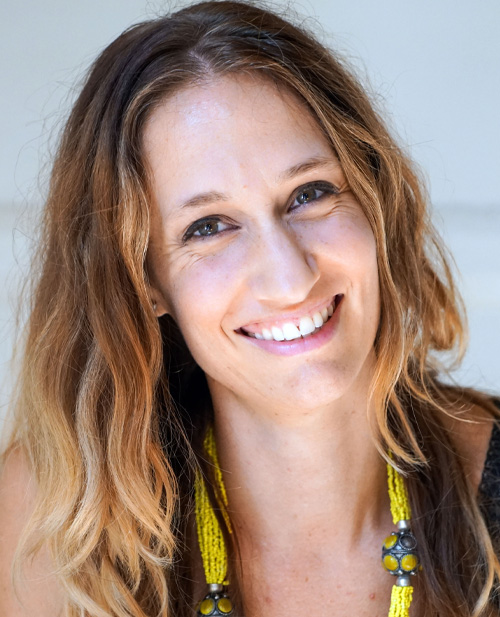
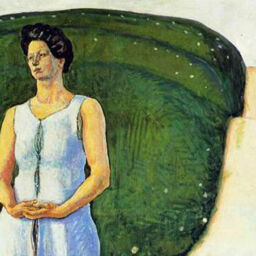

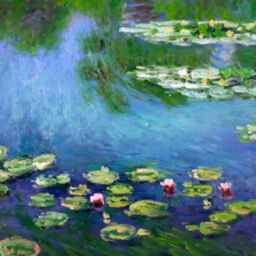
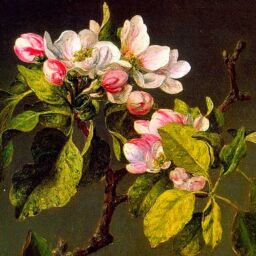
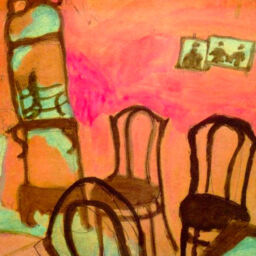
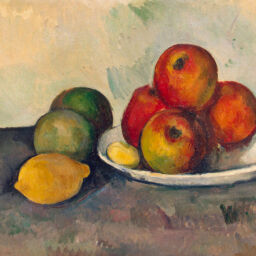


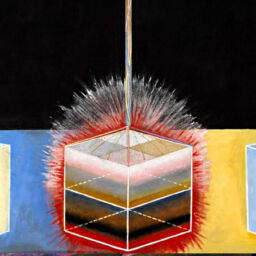
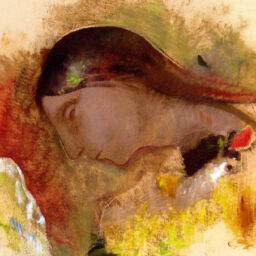
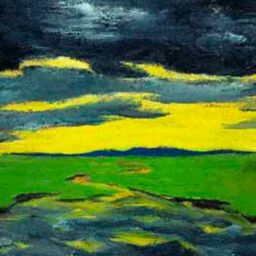
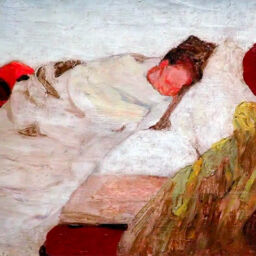
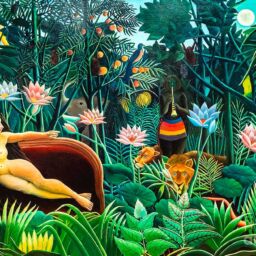
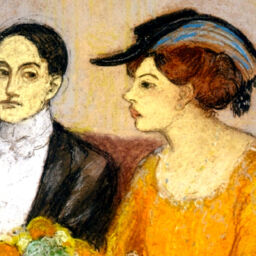
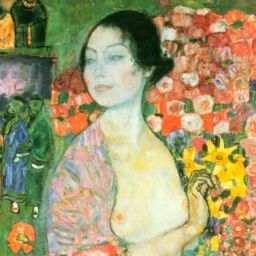
Thanks for this article! It was a pleasure and a challenge for me (as an INTJ) to read it. It describes a world that is quite distant from mine, yet very interesting.
I’d like to add here another quote from Rumi, that sounds similar to those above:
“There is a voice that doesn’t use words. Listen.”